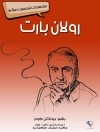Seminar paper from the year 2018 in the subject American Studies — Literature, grade: 2, 3, Johannes Gutenberg University Mainz, language: English, abstract: The significance of the unique properties of the letter as making the entire plot possible in the first place is important to analyze. Therefore, after explaining the most important vocabulary concerning temporality in narration, I will look at the temporal structure of the short story and Chopin’s use of analepses in order to convey background information on the characters.
I will also engage with significant other features of the story in terms of time vocabulary. In the last part of my paper, I will combine my findings on the temporality in the story and an interpretation to show how the construction of chronology is questioned, especially with regard to the letter, but also other themes in the story, and what these findings might reveal on the overall interpretation of the story.
Kate Chopin’s ‘The Father of Désirée’s Baby’ or in short ‘Désirée’s Baby’ has so far mostly been analyzed in terms of its racial implications and its engagement with such topics as racism, passing, and miscegenation. No specific research has been done on the temporality in the story and its significance for the interpretation of the story. When reading through the short story, it becomes clear that the construction of chronology is questioned in the story and that the most important feature is the letter.
The letter as a medium as such is already ambiguous in its temporality, as it has a different relation to chronology than the fictional narration. The letter and the information it conveys first have to be written and sent, before the information can be passed on. But the letter also may be read over and over again. Thus, the letter in itself constitutes the possibility of a disruption of the chronology that usually underlies a narration.
However, in this particular short story, the letter, revealing the ‘truth’, is placed at the very end. The usual chronology of tensed time and metrical time is thus even more questioned. It can be said that only through this ambiguous temporal role of the letter as being in two times at the same time and through presenting the option of being read at all times, the plot of the story works in the first place.
The letter simultaneously ‘participates’ in two temporalities: As the content of the letter is at the beginning, it is the origin of the problem, but it is only found by Armand at the very end and is, therefore, at the same time the solution to the conflict.
Об авторе
Ich habe einen Master of Arts in American Studies und Bachelor of Arts Philosophie (Beifach) der Johannes Gutenberg-Universität Mainz. Zur Recherche für meine Masterarbeit war ich in der Zine Library des Barnard College in New York City.












